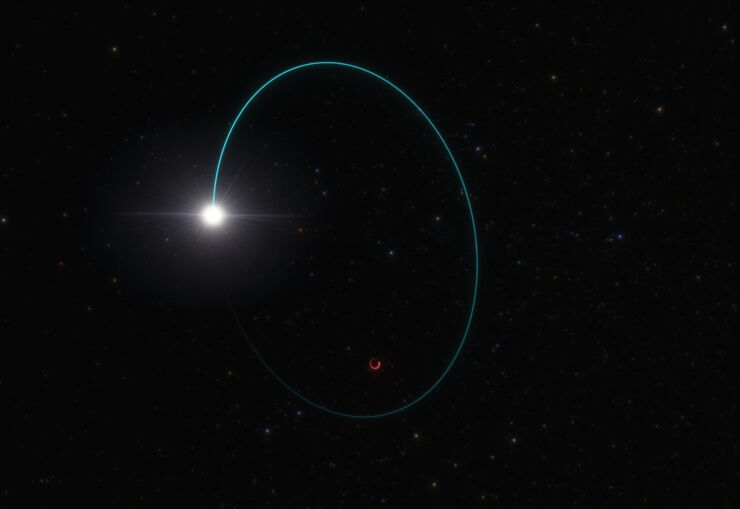The most massive stellar black hole in our galaxy discovered :: NASANET


A team of astronomers has identified the most massive stellar black hole ever discovered in the Milky Way. This black hole was discovered in data from the European Space Agency’s Gaia mission because it causes a strange “wiggle” motion in the companion star orbiting it. Data from the European Southern Observatory’s (ESO) Very Large Telescope (ESO VLT) and other ground-based observatories was used to test the black hole’s mass, which is 33 times the mass of our Sun.
Stellar black holes form from the collapse of massive stars, and those found in the Milky Way are on average about 10 times more massive than the Sun. Even the next most massive stellar black hole known in our galaxy, Cygnus X-1. reaches only 21 solar masses, making this new observation of a 33 solar mass object exceptional.
Surprisingly, this black hole is also very close to us: just 2,000 light years away, in the constellation Aquila, and it is the second closest known black hole to Earth. Called Gaia BH3 or BH3 for short, it was discovered when the team analyzed Gaia observations in preparation for a new data release. “No one expected to find a huge black hole lurking nearby that had not yet been discovered,” said Pasquale Panuzzo, a member of the Gaia collaboration and an astronomer at the Paris Observatory, part of the French National Center for Scientific Research (CNRS). ). “It’s the kind of discovery you only make once in your research career.”
To confirm their discovery, the Gaia collaboration used data from ground-based observatories, including the UVES (ultraviolet and visual echelle spectrograph) instrument on ESO’s VLT, located in the Atacama Desert in Chile. These observations revealed key properties of the companion star which, together with data from Gaia, allowed the team to accurately measure the mass of BH3.
The astronomical community had previously discovered similar massive black holes outside our galaxy (using a different detection method) and theorized that they could be formed by the collapse of stars that have very few elements heavier than hydrogen and helium in their chemistry. These metal-poor stars are thought to lose less mass during their lives and therefore have more material left over to form high-mass black holes after they die. But until now there has been no evidence directly linking metal-poor stars to high-mass black holes.
Star pairs tend to have similar compositions, meaning companion BH3 contains important clues about the star that collapsed to form this exceptional black hole. The UVES data showed that the companion was a very metal-poor star, indicating that the star that collapsed to form BH3 was also metal-poor, as expected.
Panuzzo’s research is published today in the journal Astronomy & Astrophysics. “We have taken the extraordinary step of publishing this paper on preliminary data ahead of the next release of Gaia data due to the unique nature of the discovery,” says co-author Elisabetta Caffau, also a member of the Gaia collaboration at the CNRS Paris Observatory. . Providing the data will allow other members of the astronomical community to immediately begin studying this black hole without waiting for the full publication of the data, scheduled for the end of 2025 at the earliest.
New observations of this system may reveal more about its history and about the black hole itself. For example, the GRAVITY instrument on ESO’s VLT interferometer could help determine whether this black hole is attracting matter from its environment and better understand this fascinating object.